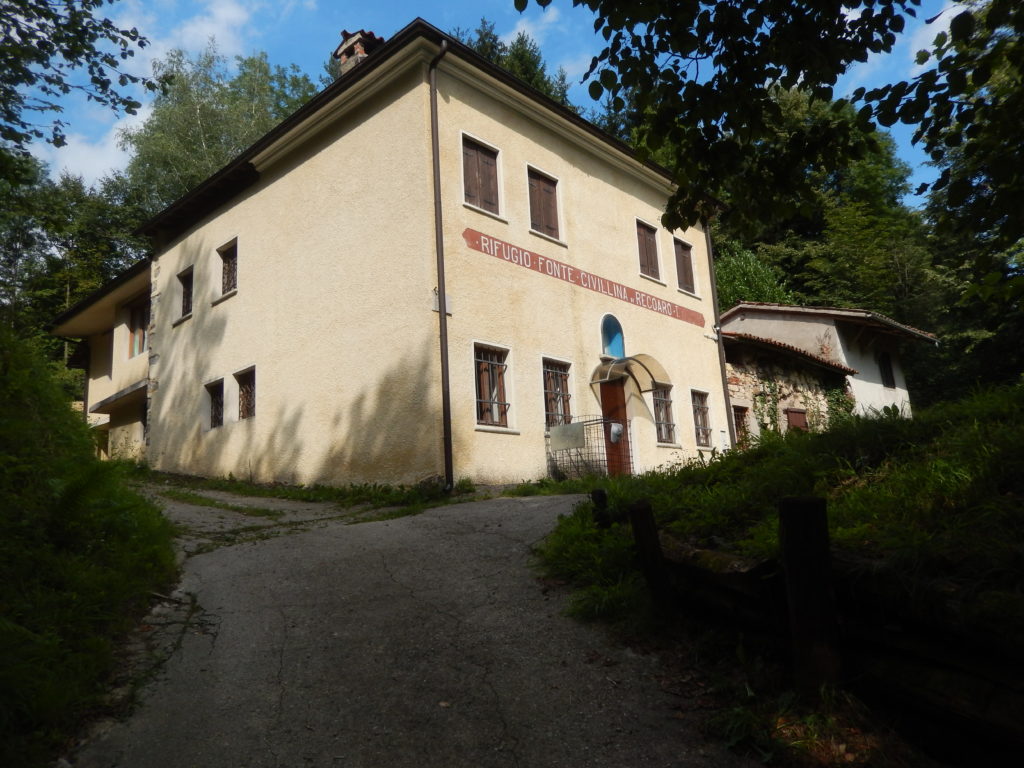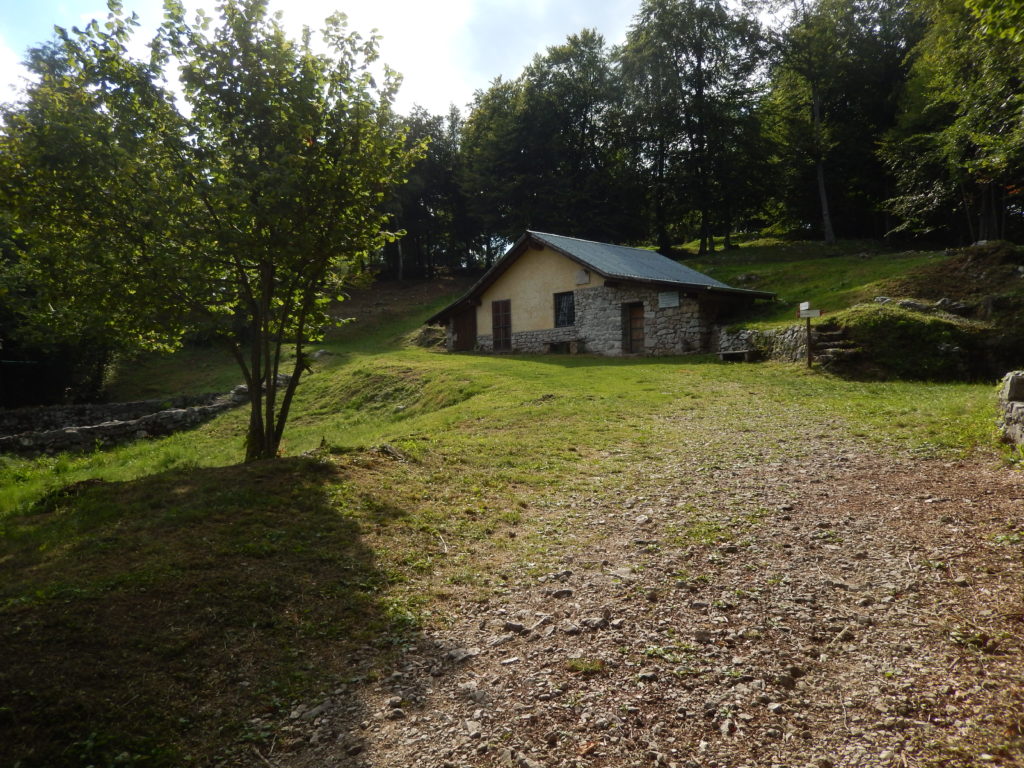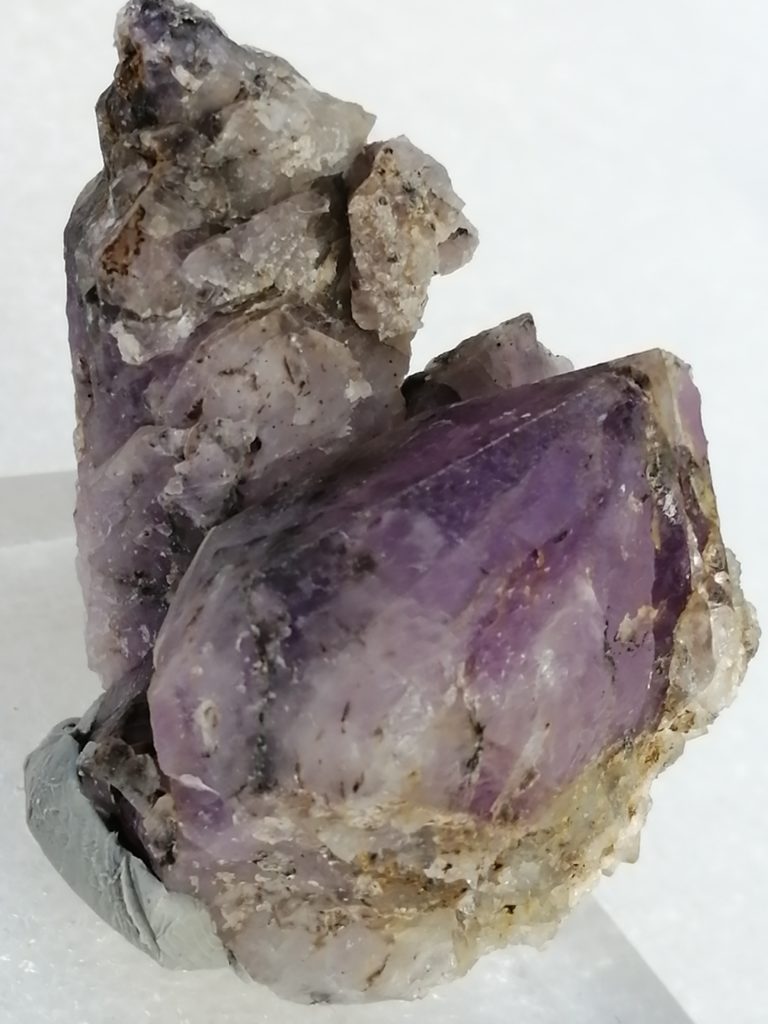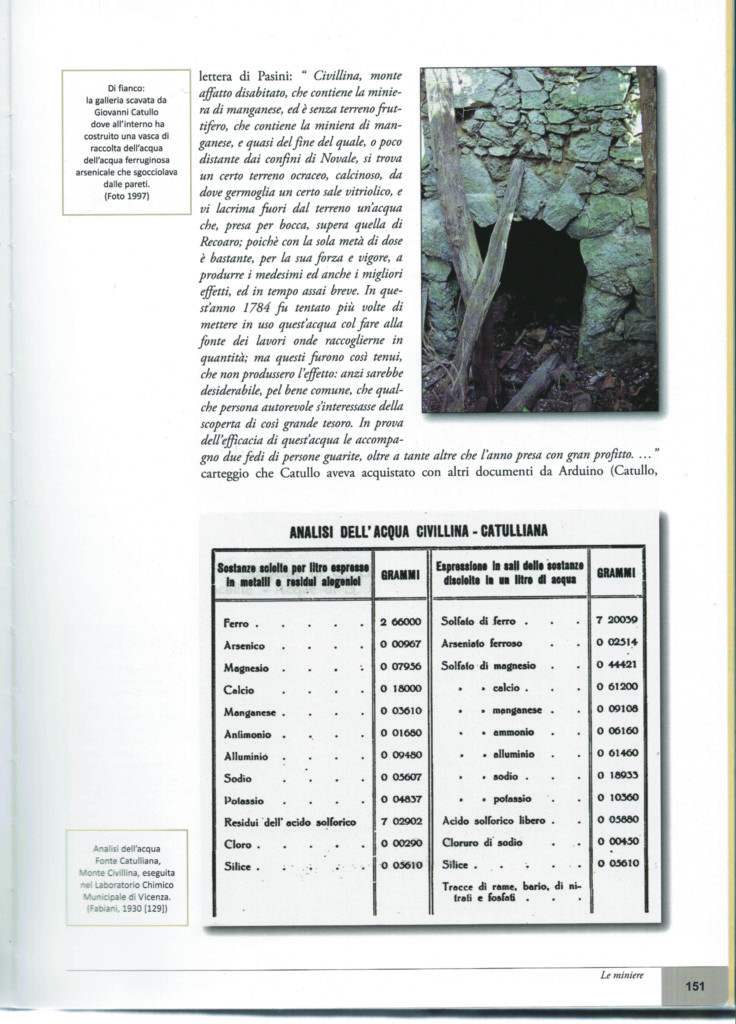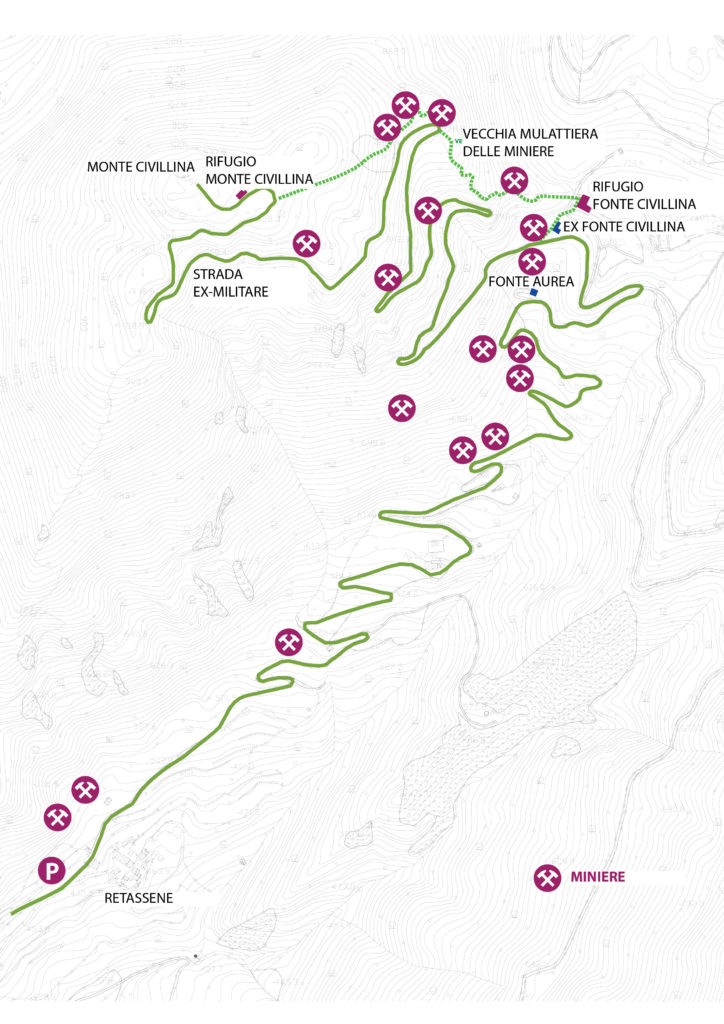GEOLOGY AND MINING
The Metalliferous District of the Vicentine Alps extends from the Agno Valley to the Posina Valley and is characterized by a large number of lead-zinc-argentiferous mineralization, pyrite, iron oxides, barite and deposits of ceramic clays, gypsum and industrial rocks. The mining activities were concentrated in particular in the areas of Valle dei Mercanti, Val dei Zuccanti, Val Riolo, Monte Naro, Monte Trisa, Monte Civillina, Monte Castello, Monte Guizza-Faedo.
Mount Civillina, from a geological point of view, is part of the lower Ladinic period, belonging to the Mesozoic. It is constituted by a white dolomitic limestone called Mount Spitz limestone, whose rocks have been affected by the intrusion of a series of magmatic strands (porphyrites and melafiri) which, through contact, have caused metamorphism, making the structure crystalline and determining numerous crystallizations of mixed sulphides and barite alternating with lenses of manganesiferous silicates. In the Upper Ladinic there is the appearance of numerous volcanic centers that determine the formation of layers of lavas and volcanoclastic materials that fill the basins; the consequence of this volcanic activity is the mobilization of minerals within the rocks with the appearance of mineral areas.
This has given rise to a mining activity known since Roman times, which has had its greatest development during the ‘400 – ‘500 by the Serenissima Republic, which, through the “investiture”, concessions to private individuals for research and cultivation of mines, favored the emergence of various companies for the extraction of silver, lead, zinc, barium and other minerals. The activity continued with less intensity in the following centuries, until relatively recent times, for the extraction of galena and manganese, kaolin and quartzite.
Today there is no longer any mining activity; some traces of this activity remain, such as tunnels still open or closed, depressions in the coast of the mountain, accumulations of excavated material in some areas.
THE EXTRACTION OF MANGANESE FOR TO THE GLASSWORKS OF MURANO UNDER THE DOMINATION OF THE SERENISSIMA
The area of Civillina affected by the presence of minerals extends towards both Val Retassane and Monte Cengìo.
Since 1500, near the ex Civillina refuge, a tunnel called “Santa Barbara” (n. 32) was set up and reactivated in the 20th century together with the “Sant’Anna” tunnel. During the dominion of the Serenissima and until the end of the 19th century, excavations were carried out (n. 34-35-36-37) to search for manganese for the glassworks of Mu- rano, used as a bleaching agent for glass. In the twentieth century, numerous companies took over with concessions to search for manganese, barite and zinc.
THE CATULLIAN SPRING AND THE TRADE OF FERRUGINOUS WATER
In 1801 Giovanni Catullo near the refuge Fonte Civillina cultivated the “pyro-lusite” (a manganese oxide) working on ancient excavations and opening new galleries. Subsequently, knowing the healing properties of the water that flowed in the fund of which he had the investiture, he decided to exploit it commercially. It was a ferruginous-arsenic water and, in 1818, after having carried out the appropriate analysis, the water was considered curative and obtained the license from the Continental Health for its sale.
In what was called “Fonte Catulliana” works were carried out in order to collect and channel the water that oozed from the rock and direct it into a collection tank that was initially made of wood and clay and later of stone.
In 1888 the source became the property of the municipality of Recoaro, which leased it for a few years. In this period the source of Civillina was a renowned place for the benefits of the waters that could be consumed until the middle of the twentieth century when the area and the hotel were closed.
MINING ARCHAEOLOGY
From the archaeological point of view, Civillina is one of the richest areas of the Recoaro-Schio mining district and this must have attracted man since the most ancient times.
During the researches of the Agno-Leogra Project, traces of frequentation datable to the initial phases of the Iron Age were found near an ancient mine. On the top of the mountain the excavation campaigns brought to light the remains of a small highland settlement where ceramic fragments, a bronze pin and evidence of the first metal working were found.

